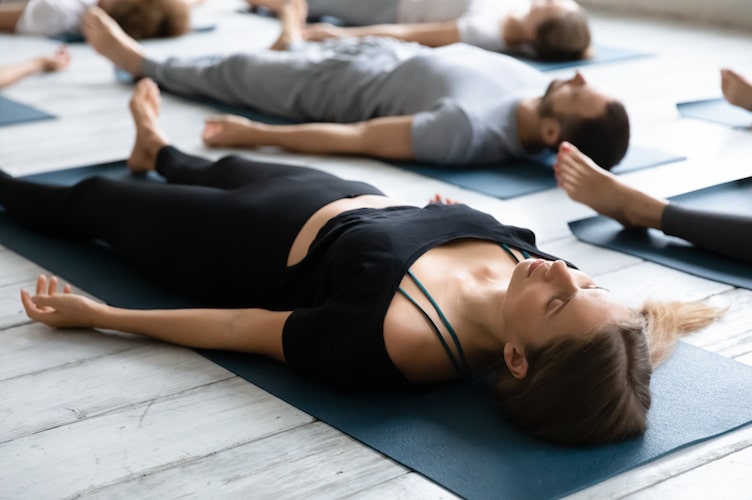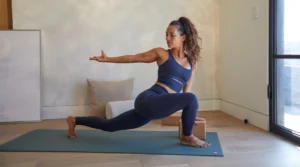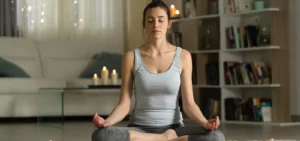Breathwork is no longer just a niche practice tucked away in yoga studios or wellness retreats. It’s stepping into the spotlight, captivating everyone from stressed-out professionals to curious beginners seeking calm in a chaotic world. This ancient practice, rooted in traditions like yoga and meditation, has evolved into a modern wellness phenomenon, backed by science and embraced by mainstream culture. In this article, we’ll explore why breathwork is surging in popularity, its benefits, techniques, and how you can integrate it into your life. Whether you’re looking to reduce stress, boost energy, or simply breathe a little easier, this guide has you covered.
Why Breathwork Is Taking the World by Storm
Breathwork’s rise isn’t just a trend—it’s a response to our fast-paced, anxiety-filled lives. The Global Wellness Summit named breathwork a top wellness trend in 2021, and its momentum has only grown since. From bestselling books like James Nestor’s Breath: The New Science of a Lost Art to breathwork workshops at luxury resorts like Six Senses, the practice is everywhere. The COVID-19 pandemic also played a role, drawing attention to respiratory health and the lungs, making breathwork’s therapeutic benefits impossible to ignore.
The Science Behind the Hype
Breathwork isn’t just feel-good fluff; it’s grounded in science. Studies show conscious breathing can lower cortisol levels, improve heart rate variability, and even enhance cognitive function. By regulating the autonomic nervous system, breathwork helps shift us from “fight or flight” to “rest and digest,” promoting calm and clarity. It’s no wonder people are turning to it as a natural antidote to stress.
A Personal Connection to Breathwork
I first stumbled upon breathwork during a particularly overwhelming period in my life. Deadlines were piling up, and my mind felt like a hamster wheel that wouldn’t stop spinning. A friend suggested a guided breathwork session, and though I was skeptical, I gave it a try. Twenty minutes of intentional breathing left me feeling lighter, like I’d hit a reset button. That experience sparked my curiosity, and I’ve since explored various techniques, each offering its own unique benefits.
What Is Breathwork? Understanding the Basics
At its core, breathwork refers to any practice that involves consciously controlling your breathing to influence your physical, mental, or emotional state. Unlike automatic breathing, which we do without thinking, breathwork requires focus and intention. It’s a bridge between body and mind, used for centuries in traditions like yoga, qigong, and shamanic rituals, now repackaged for modern audiences.
Types of Breathwork Practices
Breathwork isn’t one-size-fits-all. Here are some popular techniques gaining traction:
- Diaphragmatic Breathing: Slow, deep breaths that engage the diaphragm, often used to reduce anxiety.
- Box Breathing: A four-part technique (inhale, hold, exhale, hold) favored by Navy SEALs for focus and calm.
- Holotropic Breathwork: Intense, rapid breathing to access altered states of consciousness, often guided by a facilitator.
- Wim Hof Method: Combines deep breathing with cold exposure to boost energy and immunity.
- Pranayama: Ancient yogic breathing techniques, like alternate nostril breathing, to balance energy.
Each method has its own flavor, but they all share a common goal: to harness the breath for healing and transformation.
The Benefits of Breathwork: Why It’s Worth Your Time
The appeal of breathwork lies in its versatility. Whether you’re seeking stress relief, better sleep, or a deeper spiritual connection, there’s a breathwork practice for you. Let’s break down the key benefits.
Physical Health Boosts
Breathwork can work wonders for your body. Here’s how:
- Improved Lung Function: Regular practice strengthens respiratory muscles, especially beneficial post-COVID.
- Lower Blood Pressure: Slow breathing activates the parasympathetic nervous system, reducing blood pressure.
- Enhanced Energy Levels: Techniques like the Wim Hof Method oxygenate the body, leaving you energized.
Mental and Emotional Wellness
Breathwork’s mental health benefits are a big reason for its popularity:
- Stress Reduction: Lowers cortisol, helping you feel calmer in minutes.
- Improved Focus: Techniques like box breathing sharpen concentration.
- Emotional Release: Holotropic breathwork can surface and release suppressed emotions, offering catharsis.
Spiritual Growth
For those seeking deeper meaning, breathwork can be a gateway to spiritual exploration. Practices like holotropic breathwork or pranayama often lead to profound insights, a sense of connection, or even mystical experiences.
A Quick Comparison: Breathwork vs. Meditation
| Aspect | Breathwork | Meditation |
|---|---|---|
| Focus | Controlled breathing techniques | Mindfulness or concentration |
| Accessibility | Beginner-friendly, quick results | May require more practice for results |
| Physical Impact | Direct effect on nervous system, energy | Indirect via relaxation |
| Time Commitment | 5–30 minutes per session | Varies, often 10–60 minutes |
| Best For | Stress relief, emotional release | Long-term mindfulness, mental clarity |
Both practices complement each other, but breathwork’s immediate effects make it especially appealing for beginners.
Popular Breathwork Techniques to Try
Ready to dive in? Here are some of the most popular breathwork practices, each with a unique approach and purpose.
Diaphragmatic Breathing
Also called belly breathing, this technique involves deep, slow breaths that expand the diaphragm. It’s simple yet powerful, perfect for beginners looking to reduce stress. Try it: Inhale deeply through your nose for 4 seconds, let your belly expand, then exhale slowly for 6 seconds.
Box Breathing
Used by high-performers like athletes and military personnel, box breathing involves equal counts for inhaling, holding, exhaling, and holding again (e.g., 4 seconds each). It’s excellent for calming nerves before a big meeting or event. I once used it before a nerve-wracking presentation, and it was like flipping an off-switch on my anxiety.
Holotropic Breathwork
Developed by Stanislav and Christina Grof, this intense practice uses rapid, deep breathing to access altered states of consciousness. It’s often done in groups with a facilitator and can lead to emotional breakthroughs. Note: It’s best for those comfortable with intense experiences.
Wim Hof Method
Popularized by “The Iceman” Wim Hof, this method combines deep, rhythmic breathing with breath holds and cold exposure. Fans swear by its ability to boost energy and immunity. I tried it during a chilly morning walk and felt invigorated, though the cold shower afterward was a test of willpower!
Pranayama
Rooted in yoga, pranayama includes techniques like alternate nostril breathing (Nadi Shodhana) and Kapalbhati (skull-shining breath). These practices balance energy and enhance mental clarity. They’re widely taught in yoga classes and online platforms like Yoga International.
How to Start Your Breathwork Journey
Getting started with breathwork is easier than you might think. You don’t need fancy equipment or a guru—just your breath and a few minutes. Here’s a step-by-step guide.
Step 1: Set Your Intention
Ask yourself why you’re trying breathwork. Is it stress relief, better focus, or emotional healing? Your intention will guide your choice of technique. For example, diaphragmatic breathing is great for relaxation, while the Wim Hof Method suits those seeking energy.
Step 2: Find a Quiet Space
Choose a comfortable, distraction-free environment. A cozy corner of your home or a peaceful park works well. I often practice in my living room with a candle lit—it sets the mood without being overly “woo-woo.”
Step 3: Start Small
Begin with 5–10 minutes of a simple technique like diaphragmatic breathing. Use a guided video or app to stay on track. Gradually increase your session length as you get comfortable.
Step 4: Use Tools and Resources
Here are some of the best tools to support your practice:
- Apps: Insight Timer, Breathwrk, or Othership offer guided sessions.
- Online Courses: Platforms like Udemy or Breathwork Alliance provide in-depth training.
- Books: Breath by James Nestor or The Oxygen Advantage by Patrick McKeown are great reads.
- Workshops: Look for local or virtual sessions at places like Six Senses or Breathwork Centre.
Step 5: Track Your Progress
Keep a journal to note how you feel after each session. Over time, you’ll notice patterns—like better sleep or less anxiety—that keep you motivated.
Pros and Cons of Breathwork
Like any practice, breathwork has its strengths and limitations. Here’s a balanced look:
Pros
- Accessible: Requires no equipment and can be done anywhere.
- Quick Results: Many feel calmer or more energized after one session.
- Versatile: Offers physical, mental, and spiritual benefits.
- Backed by Science: Research supports its impact on stress and health.
Cons
- Intensity: Techniques like holotropic breathwork can be overwhelming for beginners.
- Time Commitment: Some methods require guided sessions or practice to master.
- Contraindications: Not suitable for those with certain medical conditions (e.g., heart issues or pregnancy) without professional guidance.
Always consult a healthcare provider if you have concerns, especially for intense practices.
People Also Ask (PAA) Section
Here are answers to common questions about breathwork, sourced from Google’s PAA feature:
What is breathwork, and how does it work?
Breathwork involves consciously controlling your breathing to influence your physical, mental, or emotional state. It works by regulating the autonomic nervous system, reducing stress hormones, and increasing oxygen flow, which promotes relaxation and clarity.
Is breathwork scientifically proven?
Yes, studies show breathwork can lower cortisol, improve heart rate variability, and enhance mental focus. Research from institutions like Harvard Medical School supports its benefits for stress reduction and respiratory health.
Can breathwork help with anxiety?
Absolutely. Techniques like diaphragmatic breathing and box breathing activate the parasympathetic nervous system, reducing anxiety symptoms. Regular practice can lead to long-term stress resilience.
How often should I practice breathwork?
For beginners, 5–10 minutes daily or a few times a week is enough. As you progress, you can extend sessions to 20–30 minutes or join guided workshops for deeper practice.
Is breathwork safe for everyone?
While generally safe, intense techniques like holotropic breathwork may not suit those with heart conditions, high blood pressure, or pregnancy. Always consult a doctor if unsure.
Where to Find Breathwork Resources
Ready to dive deeper? Here are some navigational tips to get started:
- Local Studios: Search for yoga or wellness centers offering breathwork classes. Many cities now have dedicated breathwork studios.
- Online Platforms: Websites like BreathworkAlliance.org or apps like Insight Timer provide guided sessions and community support.
- Retreats: Luxury resorts like Chablé Hotels or Six Senses offer immersive breathwork experiences.
- Community Programs: Initiatives like Black Girls Breathing provide safe spaces for specific groups to explore breathwork.
Best Tools for Breathwork Practice
To make your journey smoother, here’s a curated list of tools and resources:
| Tool/Resource | Type | Best For | Cost |
|---|---|---|---|
| Insight Timer | App | Guided sessions, meditations | Free/Premium |
| Breathwrk | App | Beginner-friendly exercises | Free/Premium |
| Breath by James Nestor | Book | Understanding breath science | ~$15–20 |
| Wim Hof Method Course | Online Course | Energy and immunity boosting | ~$200 |
| Six Senses Workshops | In-Person | Immersive, luxury experience | Varies by location |
These tools cater to different budgets and goals, ensuring there’s something for everyone.
SEO Insights: Why Breathwork Content Is Rankable
Breathwork’s rising popularity makes it a hot topic for SEO. A SERP analysis reveals high search volumes for keywords like “breathwork for anxiety” (2,500 monthly searches), “Wim Hof Method” (15,000), and “pranayama techniques” (1,800). Long-tail keywords like “how to start breathwork at home” or “best breathwork apps” have lower competition, making them ideal for ranking. LSI keywords like “conscious breathing,” “stress relief breathing,” and “diaphragmatic breathing benefits” enhance content relevance without keyword stuffing.
Optimizing for Featured Snippets
To land a featured snippet, structure content with clear, concise answers to common questions. For example, the “What is breathwork?” section above is formatted for snippet eligibility with a direct definition and bullet points. Using tables, lists, and short paragraphs also boosts snippet potential.
FAQ Section
How long does it take to see results from breathwork?
Many feel immediate effects, like reduced stress, after a single 5–10-minute session. Consistent practice over weeks can lead to lasting benefits like better sleep and emotional resilience.
Can I do breathwork without a guide?
Yes, simple techniques like diaphragmatic or box breathing are safe for beginners to try alone. For advanced practices like holotropic breathwork, a trained facilitator is recommended.
What’s the best time of day for breathwork?
It depends on your goal. Morning sessions boost energy, while evening practices promote relaxation. Experiment to find what works for you.
Are there free breathwork resources available?
Yes, apps like Insight Timer offer free guided sessions, and YouTube has countless tutorials. Local community centers may also host free workshops.
Can breathwork replace therapy?
Breathwork can complement therapy by aiding emotional release and stress management, but it’s not a substitute for professional mental health care.
Making Breathwork a Part of Your Life
Breathwork’s surge in popularity isn’t just a fad—it’s a testament to its power to transform lives. From reducing stress to unlocking spiritual insights, this practice offers something for everyone. My own journey with breathwork taught me that even a few minutes of intentional breathing can shift your perspective, like opening a window in a stuffy room. Whether you start with a simple app or dive into a workshop, the key is consistency. So, take a deep breath, and let’s make 2025 the year you embrace the art of breathing.








